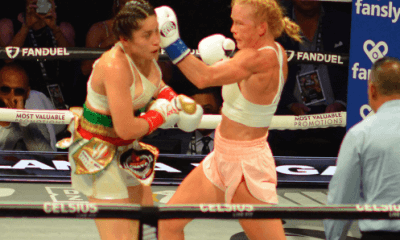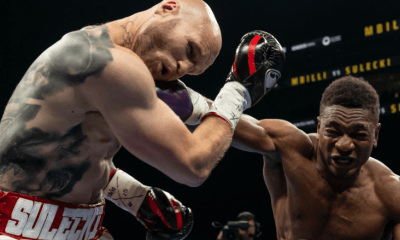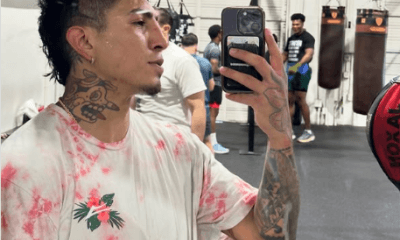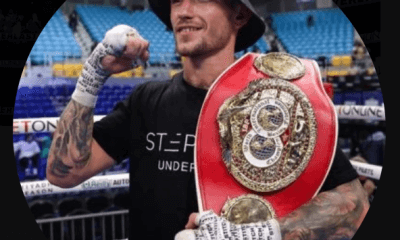Featured Articles
Boxing Referees Were Tough in Bygone Days and Jere Dunn Was Toughest of Them All
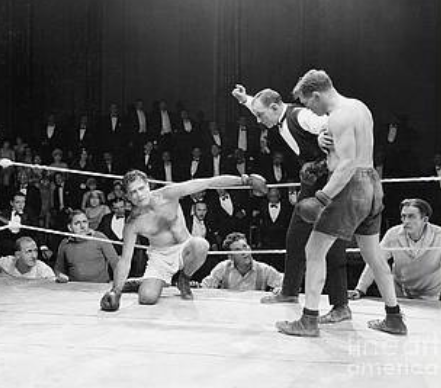
Jere Dunn was a referee of some importance during the late nineteenth century, a period when professional boxing was in flux as the modern Queensberry rules of combat hadn’t yet taken a firm hold. Some fights still had no ceiling on the number of rounds, but these “fights-to-a-finish” were now almost always contested with gloves.
BoxRec lists only 12 assignments for Dunn which occurred between 1885 and 1891, but there were likely dozens more. We can infer that he was a ref of some importance because of the boxers with whom he shared the ring. He refereed fights involving five men who would be enshrined in the International Boxing Hall of Fame: Nonpareil Jack Dempsey, Jake Kilrain, George Godfrey, Jack McAuliffe, and George Dixon.
Referees had to be tough in Dunn’s days when there were no judges. If a match had a specified number of rounds and went the full distance, the referee was the sole arbiter. Betting on fights was more common – at big fights, bookmakers circulated among the crowd before the opening bell and there was considerable action among ringsiders while a fight was in progress – and if it was hard to separate the fighters at the end of a bout, the ref’s verdict was bound to cause ill feelings; potentially a riot.
Often refs were freed from this obligation by contractual arrangements that specified that a fight had to be called a draw if both men were standing at the final gong. However, the high frequency of draws back in Dunn’s day – many fighters finished their career with more draws than wins and losses combined – was also due to squeamish referees who took the safest road and called a fight a draw if neither man was clearly dominant.
Jere Dunn was born in Lancaster, Pennsylvania. At age 15, he ran away to New York City. He served as a cavalryman on the Union side in the Civil War.
Dunn stood about five-feet-ten inches in height and had broad shoulders. In 1885, when he was promoting some boxing and wrestling shows in New Orleans, a writer for the Times-Picayune made this observation: “(Dunn) is a man of invincible courage and gamblers and fighters of every degree are in absolute fear of him…He has a square face, a well-trimmed dark beard, parted in the middle, and he always wears a perfectly fitting frock and high hat.”
By then, Dunn had shot and killed three men; an Army deserter with a bounty on his head, an alleged bank burglar, and a prizefighter of considerable repute. Dunn would allege that he shot each of them after a fierce struggle in which he had no recourse but to use his pistol.
The prizefighter was Jimmy Elliott who once had a tenuous hold on the world heavyweight title. Elliott was now in his forties and well past his prime – he had recently been badly punished by John L. Sullivan who knocked him out in the third round of their match in Brooklyn – but he was still a handy man with his fists.
Dunn and Elliott had their little set-to on March 1, 1883, in Chicago at the Tivoli, a restaurant, concert hall, and saloon on South Dearborn Street in the city’s notorious Levee district. There was bad blood between them. Dunn had arranged a rematch for Elliott with Sullivan and was out a considerable sum of money when Elliott backed out citing an injury. In a newspaper story, Dunn was quoted as saying that Elliott pulled out because he was yellow, or words to that effect.
In the Tivoli, the argument between Dunn and Elliott escalated into a gun battle. Needless to say, there are different versions of what took place. Most versions concur that Dunn opened fire first, striking Elliott in the arm or the chest. Regardless, the bullet only wounded him and a scuffle ensued that lasted for half an hour. At one point, said Dunn, Elliott held a cocked pistol against his chest, but the gun failed to discharge. The fray ended as Elliott was poised to smash Dunn over the head with the back of a chair. The chair became entangled in a chandelier, giving Dunn the split-second he needed to grab hold of his six-shooter and terminate the battle.
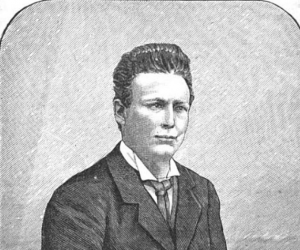
Jimmy Elliott
At his murder trial, Dunn’s attorney convinced the jury that his client did not instigate the fatal brawl and Dunn was acquitted on grounds of self-defense. It undoubtedly helped his cause that Jimmy Elliott was a notorious hot-head who had twice been sent to prison for various offenses, the second time resulting in a nine-year stay behind bars at a prison in Philadelphia following his conviction for assaulting and robbing a well-known black minstrel singer. Elliott, however, had many friends who would always believe that he had been murdered, shot dead in cold blood, and Jere Dunn would live out his days with a bullseye on his back.
Dunn would have been wise to keep a low profile, but that wasn’t his nature. In addition to refereeing big fights, he got involved in thoroughbred racing and became a conspicuous figure on the turf.
Dunn was in San Francisco with his wife on the morning of April 18, 1906, when the city was roiled by the devastating earthquake. He was a sick man at this time, wasting away from esophageal cancer, but it would be written that he got out of bed and went out in the street to comfort people who were frantic with worry.
Dunn died on June 27, 1906. He was 67 years old at the time of his death said one paper; 71 said another. Neither figure jibes with the story that he was 16 years old when the Civil War broke out, but whatever. Boxing referees were a lot tougher in Jere Dunn’s day and he was the toughest of them all.
Check out more boxing news on video at the Boxing Channel
To comment on this story in the Fight Forum CLICK HERE
-
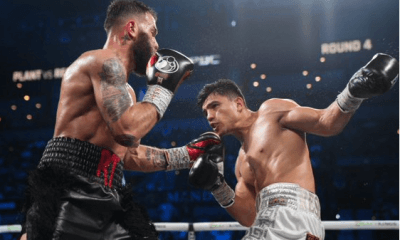
 Featured Articles4 weeks ago
Featured Articles4 weeks agoA Night of Mismatches Turns Topsy-Turvy at Mandalay Bay; Resendiz Shocks Plant
-

 Featured Articles2 weeks ago
Featured Articles2 weeks agoAvila Perspective, Chap. 330: Matchroom in New York plus the Latest on Canelo-Crawford
-

 Featured Articles1 week ago
Featured Articles1 week agoVito Mielnicki Jr Whitewashes Kamil Gardzielik Before the Home Folks in Newark
-
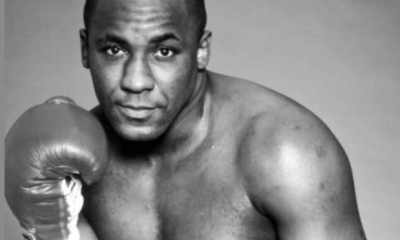
 Featured Articles4 weeks ago
Featured Articles4 weeks agoRemembering the Under-Appreciated “Body Snatcher” Mike McCallum, a Consummate Pro
-

 Featured Articles4 weeks ago
Featured Articles4 weeks agoAvila Perspective, Chap 329: Pacquiao is Back, Fabio in England and More
-

 Featured Articles3 weeks ago
Featured Articles3 weeks agoOpetaia and Nakatani Crush Overmatched Foes, Capping Off a Wild Boxing Weekend
-

 Featured Articles3 weeks ago
Featured Articles3 weeks agoFabio Wardley Comes from Behind to KO Justis Huni
-

 Featured Articles2 weeks ago
Featured Articles2 weeks agoCatching Up with Clay Moyle Who Talks About His Massive Collection of Boxing Books



